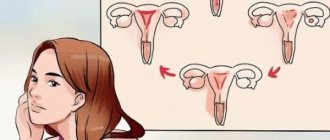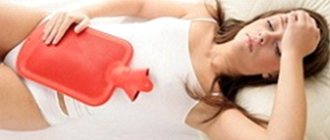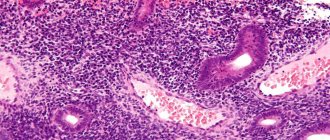The ovary is one of the paired glands of the woman’s body. Its task: the production of female sex hormones that are released into the blood. As well as the formation of an egg. They have an oval shape. They are located below the entrance to the small pelvis. In girls at the time of birth its weight is 0.15 g, in women who have not given birth it is 5-6 grams. In women aged 40-50 years, its weight decreases by half. Doctors call this process natural atrophy, that is, the onset of a pathological condition. Namely: there is a decrease in size, weight, volume. The function of the organ gradually decreases and then stops. However, if you are young, then ovarian atrophy is a condition that needs to be treated.
What is exhausted ovarian syndrome?
Unfortunately, for modern women, diseases of the reproductive system have become the norm. Sometimes you have to overcome many difficulties and go through a long “therapeutic” path before conceiving, carrying and giving birth to a healthy baby. One of these obstacles to motherhood is ovarian wasting syndrome (OSS), which is commonly called premature or early “menopause.”
According to statistics, today about 1.4% of women suffer from it. This is a pathological complex that includes secondary amenorrhea (lack of menstruation), infertility, vegetative-vascular disorders in women under 38 years of age with normal menstruation and reproductive function in the past.
There are several assumptions about the reasons for the development of SSI, but the main ones are considered to be chromosomal abnormalities (genetic abnormalities), disorders of the central nervous system (especially the hypothalamus), as well as autoimmune pathologies. It was noted that women suffering from SIS were already in the prenatal period exposed to influences harmful to the development of the fetus: drugs, chemicals, radiation.
Naturally, such an unfavorable combination of circumstances could not go unnoticed by the expectant mother’s body and led to congenital damage to the ovarian tissue. In addition, acquired damage is also possible - as a result of past infections (rubella, influenza, inflammatory processes associated with hemolytic streptococcus).
But there is good news - ovarian depletion syndrome does not always occur, since its development often requires provoking factors: regular stress, prolonged vitamin deficiency, infectious diseases suffered in childhood, constant use of medications, unfavorable radiation and environmental conditions...
Causes of ovarian atrophy
Practice shows that ovarian atrophy does not occur as an independent disease. It is a consequence of the body's limitation in vital minerals, vitamins, proteins and fats. After poor diets and fasting, its symptoms manifest themselves most clearly. Infectious diseases can also be the cause. These include: tuberculosis, syphilis, typhoid, cholera, which provoke metabolic disorders in the body. Acute poisoning with salts of heavy metals, phosphorus, and arsenic often leads to the inability to stop cell atrophy. The clinical picture is complicated by the fact that visually qualitative changes in the structural elements do not appear. The cells remain unchanged. The main components work without changes. Cellular metabolic disorders do not occur. Atrophy only leads to a decrease in the number of cells and, due to this, to a weakening of the function of the appendage as a whole, until its work completely stops.
Ovarian atrophy should not be confused with their retirement due to old age, namely the onset of menopause. This is a period during which there is a gradual decline in hormonal functions. Oncoming changes associated with the extinction of the functions of the gonads. Doctors note that, despite the increase in the average life expectancy of a woman, the average age of menopause is 50 years. And it is during this period that many women experience symptoms of the disease.
We recommend you find out: Why do the ovaries hurt?
Prevention of SIA
Any pregnant woman should pay extra attention to her health, especially if she is carrying a girl. I have already said that one of the main causes of ovarian depletion syndrome lies in the unfavorable factors to which the baby was exposed in the prenatal state. Therefore, all expectant mothers should avoid any infections, stress, or radiation that could negatively affect the child’s health.
In addition, women should regularly (at least twice a year) be examined by a gynecologist in order to “catch” ovarian wasting syndrome in the early stages.
Author: Sofya BAKHCHINYAN, gynecologist
Treatment for atrophy
The most important part in the treatment of ovarian atrophy is the correction of hormonal changes. For long-term cycle disorders, progesterone preparations are used. It is prescribed in the second phase of the cycle, when due to a lack of production of this hormone, menstruation does not occur. The use of bromocriptane, which affects the production of prolactin by the pituitary gland, also has a positive effect. The use of contraceptives has quite good results. But their selection is carried out individually, and their use is carried out under the supervision of a doctor. Simultaneously with therapeutic treatment, it is advisable to also use herbal medicines. The most common are: water pepper grass and horsetail, shepherd's purse, nettle and raspberry leaves, tansy, rue. Daily consumption of parsley (roots or leaves), as well as a decoction of stinging nettle, will have a positive effect on the body. The best results were observed when consuming anise seeds. They should be ground with honey in equal quantities by weight. Take 3-4 times a day before meals.
Important! Treatment with traditional methods is not the main one. It can be used only after agreement with the attending physician and under his supervision. Traditional medicine is always paramount and greatly increases your chances of recovery!
But, remember, treatment with medications and herbs does not replace good nutrition, adherence to work and rest. Only in complex application is it possible to achieve the desired result.
We recommend you learn: How ovarian dysfunction manifests itself
Recommendations
Ovarian failure at 40 years old - what to do? Early ovarian failure can be prevented. For this purpose, modern medicine uses various techniques. This can be traditional or non-traditional treatment. The main thing is to achieve the desired result and reverse the natural processes of suppression of reproductive functions.
Most often, this problem is solved with drug therapy. The most suitable oral contraceptives are selected for the woman individually. Such tablets contain the missing hormones, which means they help restore balance and normalize the functioning of the reproductive system.
You need to take hormonal pills in a strictly prescribed manner. The first capsule is on the first day of the menstrual cycle, the last one is on the 21st day. Then there is a week-long break, during which menstrual bleeding should subside.
If you experience premature menopause, be prepared for the fact that you will have to take hormonal contraceptives for quite a long time - at least 1 year. If treatment is stopped prematurely, ovarian dysfunction may return. You need to plan to conceive a child immediately after finishing taking the pills.
Diet and sport
Proper nutrition will not solve the problem completely, but it will significantly delay the onset of menopause. If you need to restore ovarian function, follow a special diet.
Experts recommend that patients eat as many foods as possible with a high content of vitamins A, B, C, E. Enrich your daily diet with nuts and seeds, flaxseed and olive oil, and legumes. It is also beneficial to eat fresh fruits, vegetables, sea fish, milk and eggs.
Don't forget about sports training and an active lifestyle. Even minor physical activity will activate blood circulation in the pelvic organs. Strength training will strengthen the muscular skeleton. Running and swimming are also useful.
How to get pregnant
If a woman has been diagnosed with exhausted ovarian syndrome and wants to get pregnant, then do not despair. Currently, there are a number of techniques that help, if not completely eliminate the pathology, then at least significantly increase the chances of successful conception:
- Without drug treatment. This case applies when a woman does not completely miss menstruation, and ovulation, although irregular, does occur. Therefore, in order for conception to occur, you need to ensure regular sex life (the more often, the better). Since it is impossible to calculate ovulation in this case, the constant presence of sperm is necessary. Regular sexual activity significantly increases the chances of conception, but the complete absence of drug treatment for SIS is not advisable.
- Treatment of SIJ with hormonal drugs can restore the reproductive function of the ovaries. To do this, synthetic estrogens are used, then progesterone is added. The purpose of medications is not only to “introduce” artificial hormones into a woman’s body, but also to force the ovaries to work and synthesize their own hormones. Usually the treatment is quite successful, especially if the patient is still young (under 40 years old). To make hormone therapy more effective, it is recommended to take B vitamins, as well as complex vitamin preparations, and sedative herbal remedies (to eliminate the manifestations of stress). Massage, acupuncture, and moderate physical activity have a good effect on the reproductive system. All of these methods of treating SIS increase the chances of pregnancy.
- In vitro fertilization (IVF). In cases where regular sexual activity combined with drug treatment are ineffective and pregnancy does not occur, IVF is resorted to. In vitro fertilization is a method of treating infertility in which a woman is artificially implanted with a fertilized egg directly into the uterus. The problem in this case is to take this egg from a woman. Indeed, with ovarian depletion syndrome, eggs either completely stop being produced or are produced irregularly by the ovaries.
- In the first case, donor material is used. If IVF is successful, pregnancy is no different from natural and proceeds normally. However, throughout the entire period, the woman needs to be regularly monitored by the doctor who performed the procedure, and also monitor her condition very carefully. Since the production of sex hormones in the body was disrupted even before pregnancy, it is necessary to monitor their levels while carrying a child. For example, if there is insufficient progesterone, there is a high risk of miscarriage, since the fetus may not attach to the placenta. Using in vitro fertilization for ovarian failure syndrome is often the only way to get pregnant.
- Surrogacy. There are cases when even IVF is powerless for SIA. For example, if, due to a long absence of menstruation, disorders of the uterine endometrium occur. That is, the uterus practically does not function, and the attachment of an embryo, even artificially implanted, is impossible. In this case, the only way to have a child is surrogacy or adoption. But here you should know that such cases are extremely rare, and are not associated with the diagnosis of SIJ as such, but with many associated factors. For example, persistent infertility and resistance to treatment occurs if a woman is aged 40+, if she has previously had problems with the ovaries and menstrual cycle (polycystic disease, amenorrhea, hormonal disorders, chronic inflammatory diseases, etc.). Also, in combination with other diseases (for example, pathologies of the thyroid gland), exhausted ovarian syndrome progresses and is practically untreatable. In other cases, ovarian depletion and pregnancy are quite compatible; a woman can conceive and carry a healthy child, she just needs to be patient and follow the doctor’s instructions.
Ovarian depletion syndrome and IVF: about the possibilities of IVF
Unfortunately, many doctors claim that pregnancy and premature ovarian failure are incompatible. Therefore, in most cases, if the ovaries are depleted, pregnancy without IVF is impossible. This is an operation during which an embryo grown in a laboratory is implanted into the uterus. If the embryo is implanted into the walls of the uterus, pregnancy begins, the course of which does not differ from that which occurs during natural fertilization. Therefore, many women diagnosed with ovarian depletion after IVF have the opportunity to enjoy the happiness of motherhood.
Pregnancy as a result of IVF requires special medical supervision. The doctor who performed IVF monitors the progress of such a pregnancy. Often a woman has to be hospitalized to exclude the possibility of the development of pathological processes.
Symptoms of pathology
Ovarian atrophy does not have specific symptoms, so it can be easily confused with other pathologies of the reproductive system. However, with this disease, organs may shrink.
Atrophy can be unilateral or bilateral. The following signs of this disease can be identified:
- headache;
- general weakness, increased fatigue;
- menstrual irregularities - bleeding may disappear for an indefinite period of time, and then reappear;
- change in the emotional sphere: increased level of irritability, imbalance;
- insomnia;
- pain in the limbs;
- severe weight gain, with fat tissue increasing more in the buttocks and abdomen;
- A woman’s perception of the world around her changes.
Atrophy can begin at any age, even in girls. In this case, the onset of the menstrual cycle is at risk. Girls with this diagnosis become lethargic and are not interested in anything.
Other folk recipes for SIA
- A product made from vitamin E and evening primrose oil (recommended for women suffering from SIA to stimulate fertility if they want to conceive a child).
You will need:
- 1 tbsp. l. evening primrose oil,
- 1 capsule of vitamin E (can be purchased at the pharmacy).
Recipe and application:
Mix evening primrose oil and the contents of a vitamin E capsule. 1 tbsp. l. Take the medication three times a day, an hour before eating, for at least one month. It is also advisable to drink evening primrose tea at night, prepared according to the following recipe: 1 tbsp. l. herbs, pour 250 ml of boiling water, add a little honey.
- Beetroot juice. The main component of the product includes compounds that have a positive effect on the synthesis of estrogen and other female sex hormones. You should take this juice no later than half an hour from the moment of preparation, diluting it with cool water (in a 1:1 ratio), adding honey. The recommended frequency of administration is 1 glass 1-2 times a day.
- Cabbage juice. 1⁄2 glasses of this drink should be drunk daily (best immediately after waking up and on an empty stomach).











